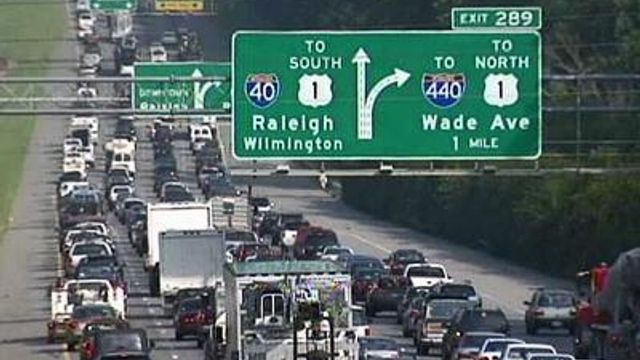DOT to release I-40/440 rebuild details Monday
The North Carolina Department of Transportation on Monday is expected to release new details about the scope and timing of the I-40/440 Rebuild, a massive three-year project that will resurface an 11.5-mile stretch of Interstates 40 and 440 on the south side of Wake County.
Posted — UpdatedThe project, which will be completed in phases between 2013 and late 2016, will be the biggest road construction project ever in the Triangle.
Traffic will be affected, but DOT officials said in June that they are working with the contractor – Granite Construction – to keep delays to a minimum. Granite said in June it plans to keep three lanes open on I-40 throughout the entire project.
Once construction begins, DOT says its goal is to get at least 30,000 drivers to use alternate routes, change their work schedules or use alternate forms of transportation to cut down on delays during heavy commute times – 6 a.m. to 8:30 a.m. and 4 p.m. to 6:30 p.m. Monday to Friday.
Staging work for the project started on parts of I-40 and I-440 in recent weeks, with the bulk of the construction to come in the next three years. Overnight crews began patching both eastbound and westbound lanes of I-40 between U.S. Highway 1 and U.S. Highway 64/264 in August in an effort to fortify certain parts of the road prior to major construction.
DOT officials on Monday were expected to release more information about the timing of lane closures and how the rebuild will affect Triangle drivers.
The problem wasn't discovered until about 10 years ago. Since then, the DOT has spent more than $10 million on temporary fixes such as patches and overlays.
• Credits
Copyright 2024 by Capitol Broadcasting Company. All rights reserved. This material may not be published, broadcast, rewritten or redistributed.






